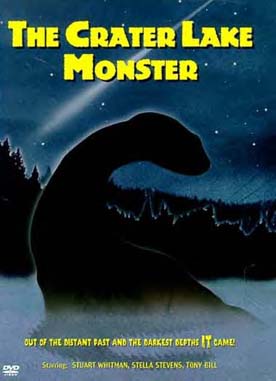


Posted on 05/04/2002 6:39:19 AM PDT by ex-Texan
Edited on 05/07/2004 6:06:43 PM PDT by Jim Robinson. [history]
Most callers to the number printed at the bottom of this column have general questions about travel. They want to know about places to vacation, estimates of cost, whether this cruise line is better than another cruise line, and the like. There are answers for most questions, but more than one is a stumper, especially those concerning how much money a traveler should take to a place the person answering the telephone has never heard of.
(Excerpt) Read more at news-press.com ...






Yeeoowww!
In 1888 William G. Steel, considered the founder of Crater Lake National Park, made the first recorded attempts to stock Crater Lake. National Park Service researchers believe that before that time, Crater Lake contained no fish. William Steel’s motive for stocking the lake was probably to improve the lake's recreational value.
Around the turn of the century, a regular stocking program was begun. Stocking continued through the early part of the century until creel censuses showed that the fish were naturally reproducing. Six species were introduced to Crater Lake during this time. The last recorded stockings were silver salmon in 1937 and rainbow trout in 1941.
According to the NPS website, “There are no inlets or outlets to the lake. Crater Lake, at 1,943 feet (592 meters) deep, is the seventh deepest lake in the world and the deepest in the United States.”
I remembered that it was deep, just couldn’t remember how deep. Also, you can’t see to the bottom either.
1. Crater Lake is nowhere near Hood River valley. That is hundreds of miles away and would take several hours to travel at with today's highways and faster cars.
2. Access to the lake is severely limited. There is only one place that steps have been established, all the rest of the shore is surrounded by very steep slippery dnagerous slopes where numerous people have died by slipping or being foolish. Not to mention that snow blocks even that access for 9 months out of the year. I have been there in late July and the roads haven't been plowed open yet. August, September, and some of October is the only time that any access is possible and then you have to walk down and up several hundred feet of stairways.
3. The lake is far deeper than 400 feet. I can't remember exactly, but I believe it is closer to 1600 feet. That info should be easily available on some website.
4. The idea that a "monster" is living in this lake is pure nonsense. This lake was formed 10,000 years ago when Mt. Mazama erupted, leaving a huge crater where the top of the mountain used to be. Think Mt. St. Helens only much much bigger. The crater walls are very steep and form a nearly perfect circle that has filled with rain and snow. There are no streams flowing into or out of this lake. Ten thousand years is not prehistoric, it does not go back to the dinosaurs. There is no way that creatures could have survived in place, and there is no way that several "block long monster(s)" that live underwater would leave the nearest possible habitat (at least 50, if not 100 miles away), travel on their flippers(?), climb up an 8,000 foot mountain, then slide down a 1,000 foot slippery slope to enter the lake and establish a breeding herd.
If Mrs Hatcher, from Albany Georgia, who is a respectable "registered nurse and physiotherapist", has ever visited Oregon (let alone lived here) I will eat my hat. For those of you in Georgia, I think you have reason to be wary of you health care professionals.
And as for Charles Herndon, the travel editor, well..........................what can I say?
And I knew when I saw the headline on this article there would be some nifty pics to brighten my morning!
turds the size of houses.
Linn, that was truly a hoot. Thank you.
From the link provided.
However, from October to June, the park turns into a snow covered wilderness, receiving an average of 533 inches of snow annually. A wide variety of trails and unplowed roads provide winter enthusiasts with access to breaththaking views, open slopes, and dense forests, making Crater Lake ideal for both daytrippers and backcountry campers who are prepared to face the challenges of winter.
By early spring it is typical to have 10 to 15 feet of snow on the ground. While snowfall is common in the Cascade Mountains, Crater Lake is one of the snowiest areas in the entire Northwest.
Even in the long, harsh winter months, Crater Lake National Park can still provide the hearty visitor with a phenomenal outdoor experience.
You see, Crater Lake is at the top of a volcano that blew its top, ala Mt. St. Helen. The lake is at about 6,000 feet. That's a big hump to do some pleasure boating. The park, btw, is celebrating it's centennial. I think this lady is spinning some bs to to some sunbirds.
Disclaimer: Opinions posted on Free Republic are those of the individual posters and do not necessarily represent the opinion of Free Republic or its management. All materials posted herein are protected by copyright law and the exemption for fair use of copyrighted works.